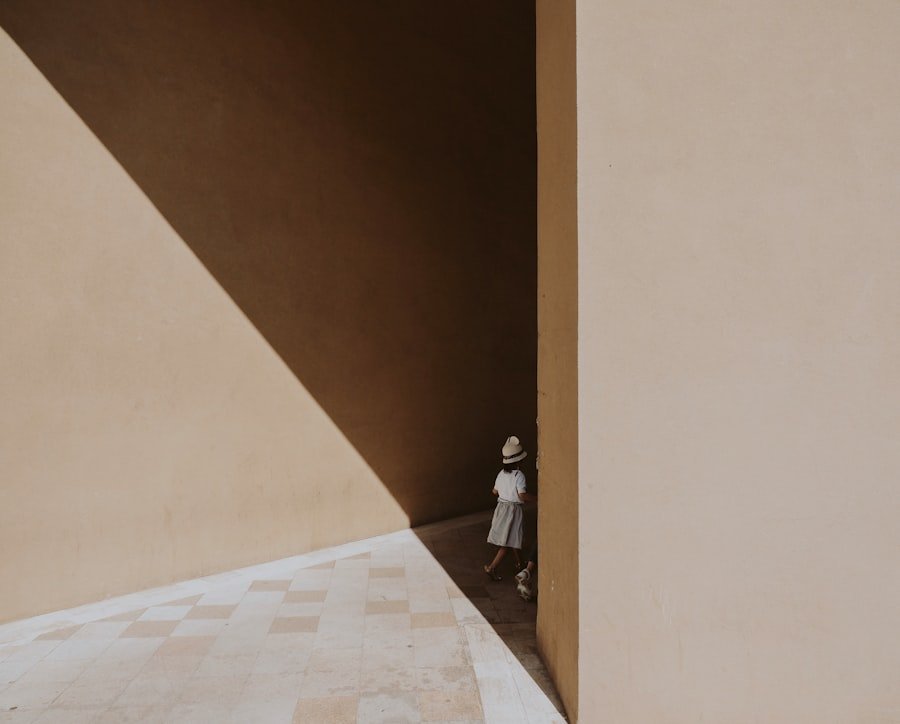Now Reading: Top Games: Minimal HUD Design
-
01
Top Games: Minimal HUD Design
Top Games: Minimal HUD Design

As a gamer, I have often found myself immersed in the worlds created by developers, where every detail contributes to the overall experience. One of the most crucial elements that can either enhance or detract from this immersion is the Heads-Up Display (HUD). In recent years, minimal HUD design has gained traction, emphasizing simplicity and clarity over clutter.
This approach strips away unnecessary information, allowing players to focus on the game itself rather than being bombarded by a plethora of indicators and stats. The evolution of minimal HUD design reflects a broader trend in gaming towards creating more engaging and immersive experiences. Minimal HUD design is not merely about reducing visual noise; it’s about crafting an interface that complements the gameplay.
By prioritizing essential information and presenting it in a clean, unobtrusive manner, developers can create a seamless connection between the player and the game world.
As I delve deeper into this topic, I will explore the significance of minimal HUD design, its impact on player immersion, and the challenges and techniques involved in its implementation.
Key Takeaways
- Minimal HUD design in games focuses on reducing the amount of on-screen display to enhance immersion and gameplay experience.
- Minimal HUD design is important for immersion as it allows players to focus on the game world without distractions from excessive on-screen elements.
- Games like “Journey” and “Inside” effectively use minimal HUD design to create a more immersive and engaging experience for players.
- Minimal HUD design enhances gameplay experience by providing necessary information in a non-intrusive manner, allowing players to stay engaged in the game world.
- Implementing minimal HUD design in games can be challenging, as developers need to find a balance between providing essential information and maintaining immersion.
The Importance of Minimal HUD Design for Immersion
Immersion is a key factor in any gaming experience, and minimal HUD design plays a pivotal role in achieving it. When I think about the games that have captivated me the most, I realize that their ability to draw me into their worlds often hinges on how they present information. A cluttered HUD can break the illusion, pulling me out of the experience and reminding me that I am merely a player interacting with a screen.
In contrast, a minimal HUD allows me to lose myself in the narrative and environment, making every moment feel more authentic. Moreover, minimal HUD design encourages players to engage with the game world itself rather than relying on on-screen indicators. For instance, when health bars or ammo counts are subtly integrated into the environment or represented through visual cues rather than explicit numbers, I find myself paying closer attention to my surroundings.
This shift not only enhances my immersion but also fosters a deeper connection with the game’s mechanics and story. The less I am distracted by extraneous information, the more I can appreciate the artistry and craftsmanship that goes into creating these virtual worlds.
Examples of Games with Effective Minimal HUD Design

Several games stand out for their effective use of minimal HUD design, each offering unique approaches that enhance player immersion. One such example is “Journey,” a visually stunning game that employs an almost non-existent HUD. Instead of traditional indicators, players navigate through breathtaking landscapes guided by visual cues and sound.
The absence of a conventional HUD allows me to fully absorb the beauty of the environment while focusing on my journey alongside other players. This design choice not only enhances immersion but also fosters a sense of connection with others in the game. Another notable example is “Firewatch,” which utilizes a minimalistic approach to convey essential information without overwhelming players.
The game’s HUD consists primarily of a compass and a map, both of which are seamlessly integrated into the gameplay experience. As I explore the Wyoming wilderness, I appreciate how these elements serve as tools rather than distractions. The minimal HUD design allows me to focus on the narrative and my interactions with other characters, creating a more engaging and emotionally resonant experience.
How Minimal HUD Design Enhances Gameplay Experience
The gameplay experience is significantly enhanced by minimal HUD design, as it encourages players to engage more deeply with both mechanics and narrative. When I play games with cluttered interfaces, I often find myself distracted by numerous indicators vying for my attention. In contrast, minimal HUDs streamline information delivery, allowing me to concentrate on what truly matters: my actions and decisions within the game world.
This clarity fosters a more intuitive understanding of gameplay mechanics, enabling me to react more fluidly to challenges. Additionally, minimal HUD design can create moments of tension and excitement that are often lost in more traditional layouts. For instance, in survival games where resources are limited, having fewer indicators can heighten the stakes.
When I am unsure of my health status or ammunition count due to a subtle HUD, every encounter becomes more thrilling. This uncertainty forces me to rely on my instincts and observations rather than simply glancing at numbers on a screen, resulting in a more engaging and dynamic gameplay experience.
The Role of Minimal HUD Design in Player Engagement
Player engagement is crucial for any successful game, and minimal HUD design plays an essential role in fostering this connection. When I am immersed in a game with a clean interface, I feel more invested in my character’s journey and the unfolding narrative. The absence of distractions allows me to form emotional connections with characters and storylines, making my gaming experience more meaningful.
This engagement is further amplified when developers use environmental storytelling techniques that complement minimal HUDs. Moreover, minimal HUD design encourages exploration and experimentation within the game world. With fewer indicators guiding my actions, I am motivated to discover hidden secrets or alternative paths that may not be immediately apparent.
This sense of discovery enhances my overall enjoyment and keeps me engaged for longer periods. As I navigate through beautifully crafted environments without constant reminders of objectives or stats, I find myself more willing to take risks and explore every nook and cranny.
The Challenges of Implementing Minimal HUD Design in Games

While minimal HUD design offers numerous benefits, it also presents several challenges for developers. One significant hurdle is ensuring that players receive all necessary information without overwhelming them or detracting from immersion. Striking this balance requires careful consideration of what information is truly essential for gameplay while avoiding unnecessary clutter.
As someone who appreciates both aesthetics and functionality in games, I understand how difficult it can be to achieve this equilibrium. Another challenge lies in catering to diverse player preferences and playstyles. Not all players thrive in environments with minimal guidance; some may prefer detailed stats and indicators to help them navigate challenges effectively.
Developers must find ways to accommodate these varying needs while maintaining the integrity of their minimal design philosophy. This often involves implementing customizable options that allow players to adjust their HUD settings according to their preferences without compromising the overall experience.
Techniques for Achieving Minimal HUD Design in Game Development
To successfully implement minimal HUD design, developers can employ several techniques that prioritize clarity and simplicity while enhancing player immersion. One effective approach is integrating essential information directly into the game world rather than relying solely on traditional UI elements. For instance, health status could be represented through visual changes in character appearance or environmental cues rather than explicit numbers on-screen.
This technique allows me to gauge my character’s condition without breaking immersion. Another technique involves using subtle animations or transitions to convey information without overwhelming players with static displays. For example, instead of displaying an ammo count prominently on-screen, developers might choose to animate the character’s weapon as it runs low on ammunition or visually indicate reload prompts through environmental cues.
These methods create a more organic flow of information that feels natural within the context of gameplay while maintaining a minimalistic aesthetic.
The Impact of Minimal HUD Design on Player Accessibility
Accessibility is an increasingly important consideration in game design, and minimal HUD design can have both positive and negative impacts on this aspect. On one hand, a clutter-free interface can benefit players who may struggle with processing large amounts of information at once. By presenting only essential details clearly and concisely, developers can create an environment that is easier for all players to navigate.
However, there is also a risk that minimal HUDs may inadvertently exclude certain players who rely on specific indicators for guidance or support during gameplay. As someone who values inclusivity in gaming experiences, I recognize the importance of ensuring that minimal designs do not compromise accessibility features such as color contrast or text readability. Developers must carefully consider how they can maintain a minimalist approach while still providing necessary support for diverse player needs.
Balancing Minimal HUD Design with Necessary Information for Players
Finding the right balance between minimalism and functionality is crucial for effective HUD design in games. While I appreciate the aesthetic appeal of a clean interface, it’s essential that I still receive all necessary information to make informed decisions during gameplay. Developers must prioritize which elements are truly vital for player success while ensuring they remain unobtrusive within the overall design.
One effective strategy involves utilizing contextual cues that provide information only when needed rather than displaying everything at once. For example, health indicators could appear only during critical moments or when damage is taken rather than being constantly visible on-screen. This approach allows me to maintain focus on gameplay while still receiving important feedback when necessary—striking an ideal balance between minimalism and functionality.
Future Trends in Minimal HUD Design for Games
As gaming continues to evolve, so too will trends in minimal HUD design. One emerging trend is the integration of augmented reality (AR) elements that blend seamlessly with gameplay while providing essential information without cluttering the screen. This innovative approach has the potential to revolutionize how we interact with game worlds by creating immersive experiences where information feels like an organic part of the environment rather than an intrusive overlay.
Additionally, advancements in artificial intelligence (AI) may lead to more adaptive HUD designs that respond dynamically based on player behavior or preferences. Imagine a game where the interface adjusts itself according to my playstyle—providing more detailed information when needed but retreating into simplicity during moments of exploration or narrative focus. Such developments could further enhance immersion while catering to individual player needs.
The Future of Minimal HUD Design in Gaming
In conclusion, minimal HUD design represents a significant shift towards creating more immersive and engaging gaming experiences. As I reflect on my own experiences as a player, it becomes clear that this approach not only enhances immersion but also fosters deeper connections with gameplay mechanics and narratives. While challenges remain in balancing simplicity with functionality and accessibility, innovative techniques continue to emerge that push the boundaries of what is possible within game design.
Looking ahead, I am excited about the future trends shaping minimal HUD design—particularly those driven by advancements in technology such as AR and AI integration.
As developers continue to explore new possibilities within this realm, I eagerly anticipate how minimal HUD design will evolve alongside our ever-changing understanding of player engagement and immersion in gaming.
If you’re interested in exploring the greatest game storylines in history, be sure to check out this article on the topic. It delves into the narratives that have captivated gamers for years and offers insights into what makes a compelling story in a video game. Additionally, for those looking to master the boss battle in their favorite games, this article provides valuable tips and strategies to help you come out victorious. Both of these articles offer valuable insights for gamers looking to enhance their gaming experience.
FAQs
What is a minimal HUD design in games?
A minimal HUD design in games refers to a user interface that displays only essential information to the player, such as health, ammo, and objectives, while minimizing the amount of clutter on the screen.
What are the benefits of minimal HUD design in games?
Minimal HUD design in games can improve immersion by reducing distractions and allowing players to focus more on the game world. It can also create a cleaner and more aesthetically pleasing visual experience.
What are some examples of games with minimal HUD design?
Games such as “Journey,” “Firewatch,” and “Inside” are known for their minimal HUD design, where the interface is kept to a minimum to enhance the overall gaming experience.
How does minimal HUD design impact gameplay?
Minimal HUD design can impact gameplay by encouraging players to rely more on environmental cues and visual storytelling, leading to a more immersive and engaging experience. It can also challenge players to be more observant and attentive to their surroundings.
Are there any drawbacks to minimal HUD design in games?
While minimal HUD design can enhance immersion and visual aesthetics, it may also make it challenging for players to track certain game elements, such as health and ammo, leading to potential frustration or confusion. Developers must carefully balance minimalism with providing necessary information to players.



























